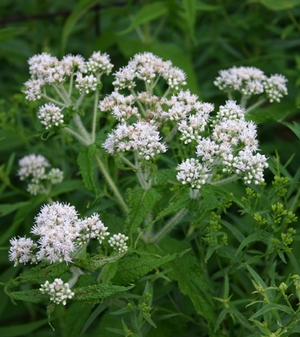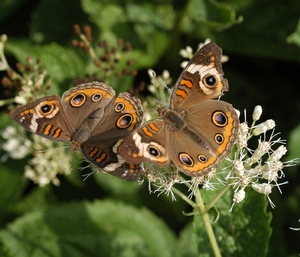Eupatorium perfoliatum
Common: common bonesetEupatorium perfoliatum LP50 - 50 per flat
- Height: 3'-4'
- Spread: 2'
- Spacing: 18"
- Hardiness Zone(s): 4-8


Eupatorium perfoliatum LP50 - 50 per flat

Loose, white, flat-topped flowers over deep green foliage with hairy stems. E. perfoliatum is a clumping, slightly aromatic, easy to grow plant with low maintenance. Great for attracting butterflies. E. perfoliatum may be used in border and wildflower gardens, around the banks of a pond and in areas in which it may naturalize.
Will grow in sandy to clay soils, but needs constant moisture. This prairie plant is easily propagated by seed, cuttings, division and may also be transplanted in spring. Cut back in early spring and fertilize to promote bushier growth.
Commonly found in wetlands, man-made to native, Eupatorium perfoliatum is a pollinator favorite. Capped in loose white flat-topped flowers over deep green foliage with hairy stems, boneset is a clumping and slightly aromatic native. A wonderful addition to any habitat restoration, wildflower meadow, or pollinator garden, boneset is best placed around the banks of a pond, retention basins, or other wet areas where it may naturalize and bloom in late summer.
Eupatorium perfoliatum can be found in swamp margins, streambanks and thickets of Nova Scotia and Quebec to North Dakota south to Texas and Florida. While it can take any kind of soil, from sand to clay, it needs consistent moisture. It is very adaptable and can grow in full sun to shade and self-seeds readily. For a happier, bushier habit, cut back the plant in spring.
Flowers with flat-topped shapes such as umbels or asters are always a favorite for pollinators due to their easy nectar and pollen access and boneset is a great example. During bloom, this plant is covered in different butterflies and short tongued bees while the foliage is great forage for larvae and caterpillars. Like most Eupatorium, the foliage is too bitter to be palatable to deer and is a great plant in a site where deer pressure is high.